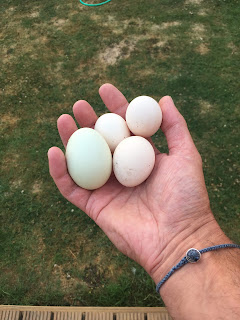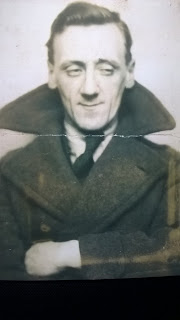The Lem Reviews 2020 - #3 "Death is an Eggshell, Life is an Egg"
In Tristram Shandy, Laurence Sterne highlights - in 1759 - the impossibility of the novel:
“I am this month one whole year older than I was this time twelve-month; and having got, as you perceive, almost into the middle of my third volume – and no farther than to my first day’s life – ‘tis demonstrative that I have three hundred and sixty four days more life to write just now than when I first set out.”
In other words, that which the novel attempts to describe is always bigger than its capacity. It can only ever be partial.
Yet the problem is even worse. The very medium of the novel – words, arranged in order, on a page – is the restricted, linear and polar opposite of the messy, complex, interdependent nature of the reality it seeks to represent. The novel begins, unavoidably, on the first page; but where, truly, is the beginning of a story?
In his remarkable work ‘Death is an Eggshell, Life is an Egg’, Antonio Churigot has attempted to overcome this seemingly fundamental dilemma. Rather than take the form of a book, ‘Death’ exists only as a virtual entity. Accessible via the internet, the work presents first as an egg, seemingly suspended in space and slowly rotating. Using your keypad or cursor you approach the egg, as if you are a tiny spaceship approaching an asteroid. The surface of the egg becomes progressively clearer: it looks like an ordinary chicken’s egg. Get closer still and it is obvious you are being invited to land.
But where? There are no particular distinguishing features. Yes, there is clearly a top and a bottom – as I said, it looks just like an ordinary egg of the kind you have in your fridge – but, other than that, there are no clues.
On my first journey - and ‘journey’ is the best word I can come up with - I landed just above what I deemed the equator. What happened next was truly extraordinary.
Upon touchdown, I found myself immersed in an 1865 painting by Cezanne entitled “Still Life with Bread and Eggs”. After a few minutes absorbed in Cezanne’s rich palette, I was taken to Dr Seuss’s “Green Eggs & Ham”. Now, as well as the images from that extraordinary work, the words scrolled across the screen. (I later found out that, had I had my speakers switched on, I would have heard the words narrated, too.) Within moments, I was learning about frog spawn and, moments later, hearing The Beatles sing “I am the egg man”. As The Beatles faded out, I was suddenly in the middle of The Great Gatsby, between East and West Egg.
The effect was disorienting, dizzying and irritating in equal measure. It was also… intoxicating. I pressed ‘Again’ (the only button visible on the screen) and guided my spacecraft towards a point this time just below the equator…
…and found myself confronted by an enormous ostrich egg, together with details of its weight and gestation period and the chemical properties of its shell. Soon enough I was enveloped by da Vinci’s ‘Leda and the Swan’ (in which Castor and Pollux are presented freshly hatched) before I was whisked to the scene in Alien where Kane hovers over the egg, moments before he becomes impregnated. In the shock of that moment, I suddenly hear the opening lines of Allen Ginsberg’s Howl, and stay with it for minute after minute after minute, lost in its madness until I learn of those “who plunged themselves under meat trucks looking for an egg”…
Does this mean anything, I wondered? Are the connections devised by Churigot? Or an algorithm? Or is it simply ‘random’?
Over the subsequent days I revisited ‘Death’ on dozens of occasions. On every occasion my journey differed, even when I tried as hard as I could to land in the same place as I had previously. (The lack of texture on the surface, the lack of identifying features of any kind, makes this close to impossible.) Every journey evoked powerful emotions, sometimes complex and conflicting, sometimes deep and unified.
It sounds crazy, ridiculous, overwhelming – but somehow it works. With every journey, there’s a beginning, some middle, and an end. There are words and music and images and – and imagination. It has all the ingredients of story.
Is the story there, or do you impose it?
And what, after all, is the purpose of fiction? To provide an escape? To teach, to reassure? To shake, to disturb, to offer? To see the world from one perspective so as to throw your own into relief? “Death is an Eggshell, Life is an Egg” may not be a novel, but it does the same job. It may even do it rather better.
You should try it yourself – where might you land? An Old Woman Cooking Eggs by Velazquez? The music of The Beastie Boys? The words of Catch-22? A ritual chant from the Upanishads? My final journey before I concluded this review ran:
a poem by Maya Angelou
a Japanese
play called ‘The Egg Learns to Stand’
a short
documentary on the welfare of chickens
the
particulars of making a Persian omelette
a
kaleidoscope of painted Easter eggs
an
introduction to the ancient Greek practice of orphism



Comments